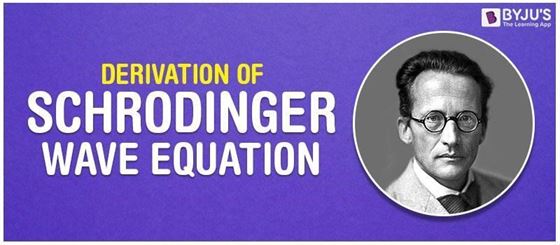Schrödinger Equation is a mathematical expression which describes the change of a physical quantity over time in which the quantum effects like wave-particle duality are significant. The Schrödinger Equation has two forms: the time-dependent Schrödinger Equation and the time-independent Schrödinger Equation. The time-dependent Schrödinger Wave Equation derivation is provided here so that students can learn the concept more effectively.
Questions related to the derivation of the Schrödinger Wave Equation are one of the most commonly asked questions in board exams and various competitive exams. The derivation of the Schrödinger Wave Equation is given below in such a way that students understand the concept in an interesting and easy manner.

Schrödinger Wave Equation Derivation (Time-Dependent)
Considering a complex plane wave:
Now taking the derivatives,
We know that,
where ‘λ’ is the wavelength and ‘k’ is the wavenumber.
We have
Therefore,
Now multiplying Ψ (x, t) to the Hamiltonian we get,
The above expression can be written as:
We already know that the energy wave of a matter wave is written as
So we can say that
Now combining the right parts, we can get the Schrodinger Wave Equation.
This is the derivation of Schrödinger Wave Equation (time-dependent). Students must learn all the steps of Schrodinger Wave Equation derivation to score good marks in their examination. Stay tuned with BYJU’S and learn various other derivation of physics formulas.
Watch the video and learn more about wave equations


It is self explanatory
I like it…..its justb very owesome
This derivation is good and simple so easy to learn
easy explanation
This is awesome
This is very educative
This helped me in my endeavour to reactivate my long-dormant knowledge of quantum mechanics, thanks.